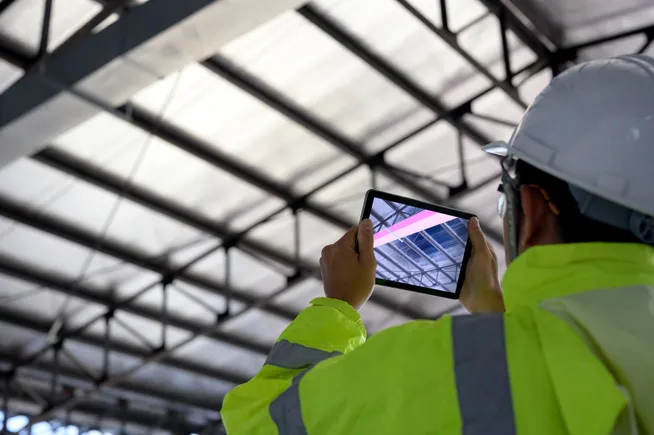Dive Brief:
- Figure out the best use cases, but don’t try to shoehorn artificial intelligence where it doesn’t belong, a McCarthy tech expert and other panelists told listeners last week during a BuiltWorlds webinar.
- The panel, “Emerging Disruptors in Construction: The What, How, Why and Opportunities,” focused on the technologies that currently, or will soon, impact the construction industry, and how builders can prepare for them.
- Alex Belkofer, a senior director of VDC for St. Louis-based McCarthy, urged listeners not to “boil the ocean” with AI, but instead find niches for the tech that they know will fit in the desired workflows.
Dive Insight:
Belkofer told the audience that McCarthy was aiming to draw a distinction between standardization and optimization.
“I think AI is really going to help us in the optimization lane,” Belkofer said. “There’s really tangible use cases for AI right now, but I feel like you can’t boil the ocean with AI. You [have] to make it very targeted.”
In addition, Belkofer said McCarthy is focusing its AI efforts on specific data sets that can drive gains in preconstruction, generating assets or scheduling.
To that end, Belkofer took a phrase he heard at a conference and has adopted it for himself — the team is “putting AI in a box,” he said.
“If we’re just trying to apply AI to our entire business or large data sets, I think it’s going to take a while for that to really gain traction,” Belkofer said.
People first
And amid all the talk of modernizing and streamlining work, it’s important not to forget a key part of the construction process — the people themselves, according to panelist Daniel Dart, general partner at New York City-based venture capital firm Rock Yard Ventures.
Part of what makes humans exceptional, according to Dart, is our “irrationality,” where something may not make total sense, but it works all the same, when it comes to creativity and art. With AI, Dart says people risk losing that edge.
“I think that’s the thing that’ll get lost with AI. I think at times it’ll be too logical, too rational, and kind of take away things that I think are really beautiful and special,” Dart said.
The positives and the pitfalls
The conversation about AI’s potential benefits and risks has been a common refrain in construction recently. At the ENR FutureTech conference in June, Jad Chalhoub, director of business analytics for San Jose, California-based Rosendin, compared the technology to drunk Albert Einstein, brilliantly disseminating complex information that may or may not be accurate.
Other contractors are also leveraging different AI tools to meet their needs — Balfour Beatty’s legal department uses Document Crunch to evaluate and mark up its construction contracts. Providence, Rhode Island-based Gilbane used a specialized chatbot and software from Trunk Tools to manage almost 21,000 documents while it built the $456 million Baird Center in Milwaukee.
Builders including DPR are also keeping an eye on the technology, but, like Belkofer, exercise caution.
“We are developing applications powered by generative AI designed to revolutionize how questions about projects, data and documents are addressed,” said Hrishi Maha, DPR’s AI and data leader, in the company’s Q1 2024 Market Conditions Report. “Our aim is to significantly enhance the speed and efficiency of information retrieval and analysis.”

